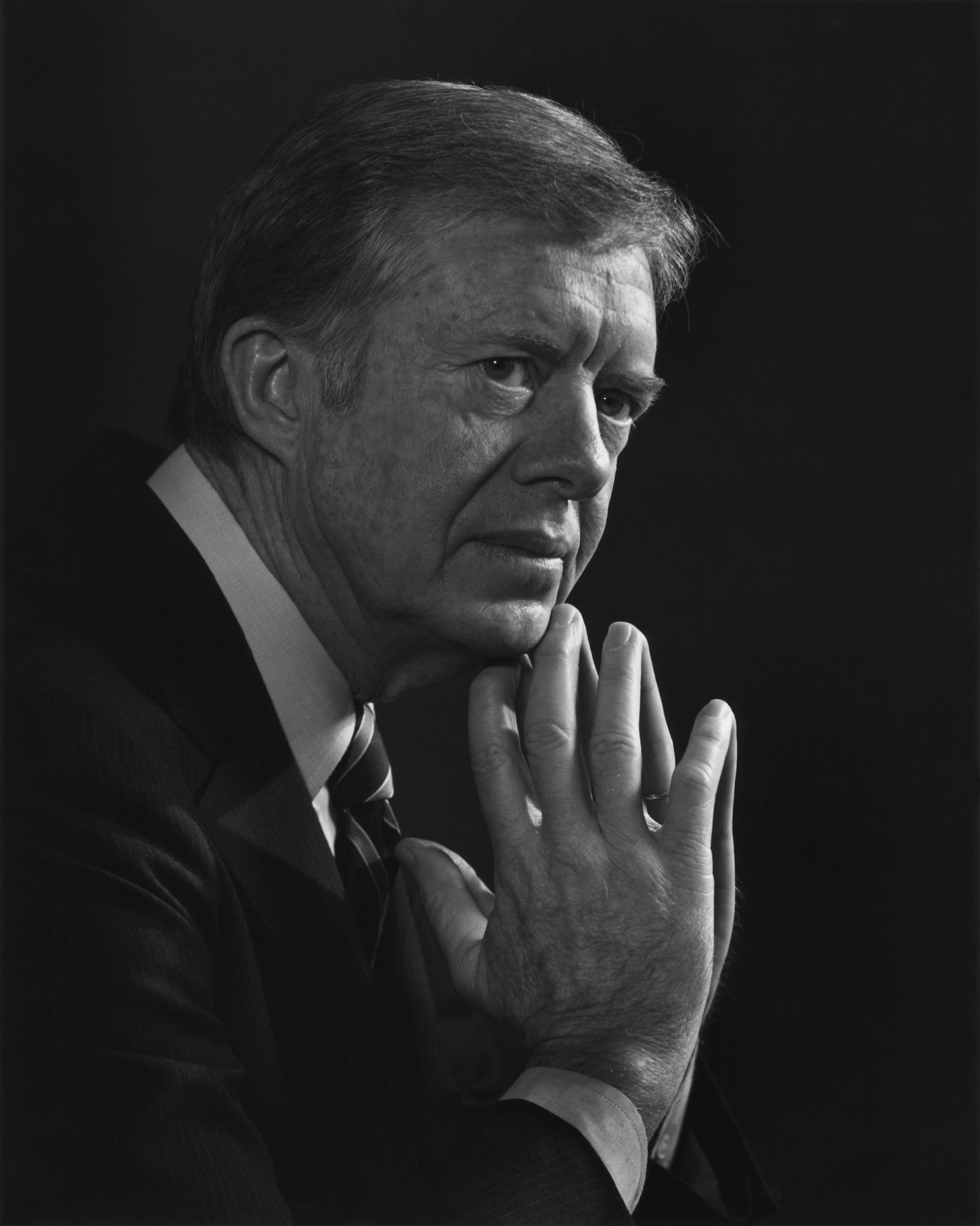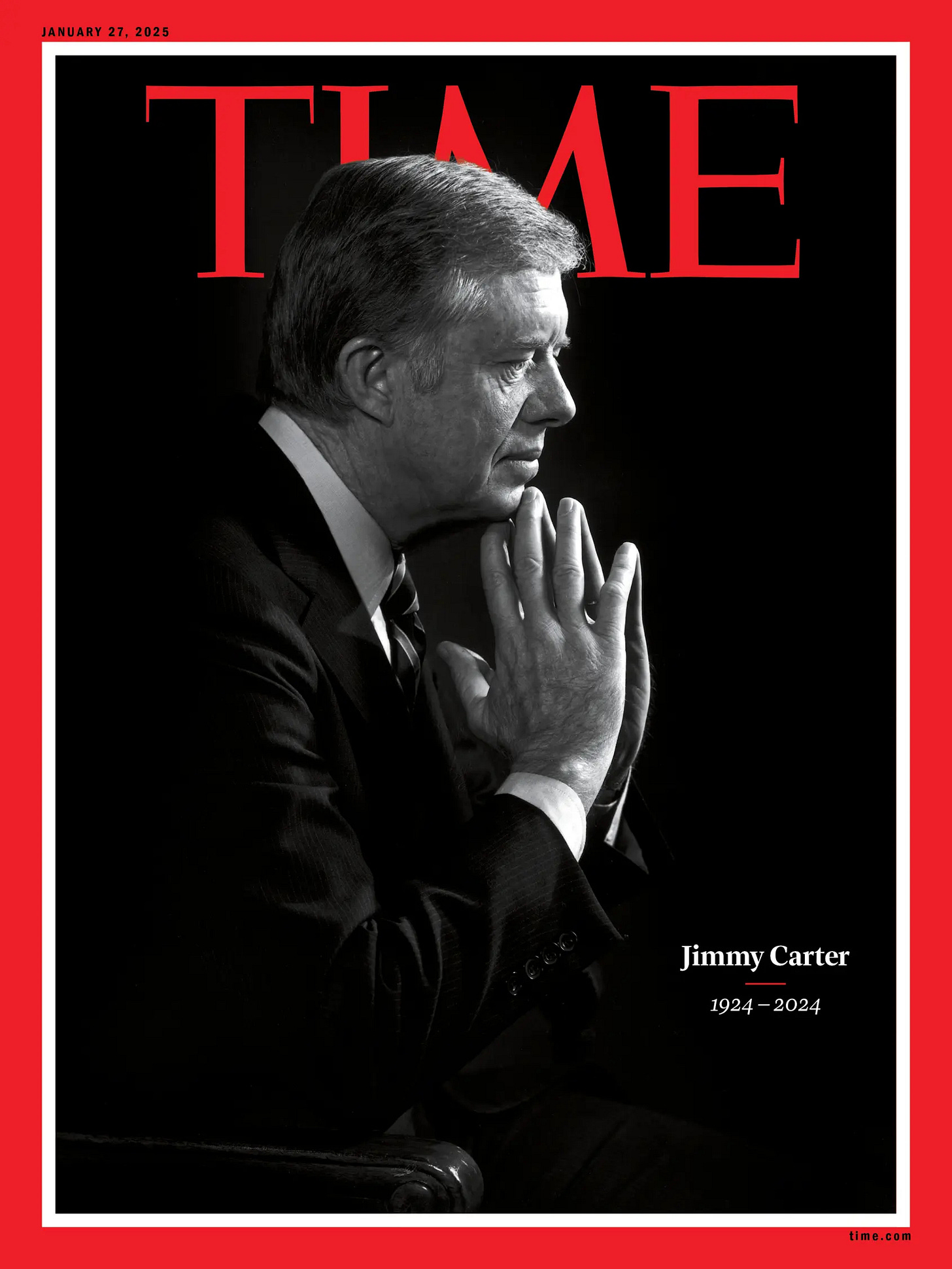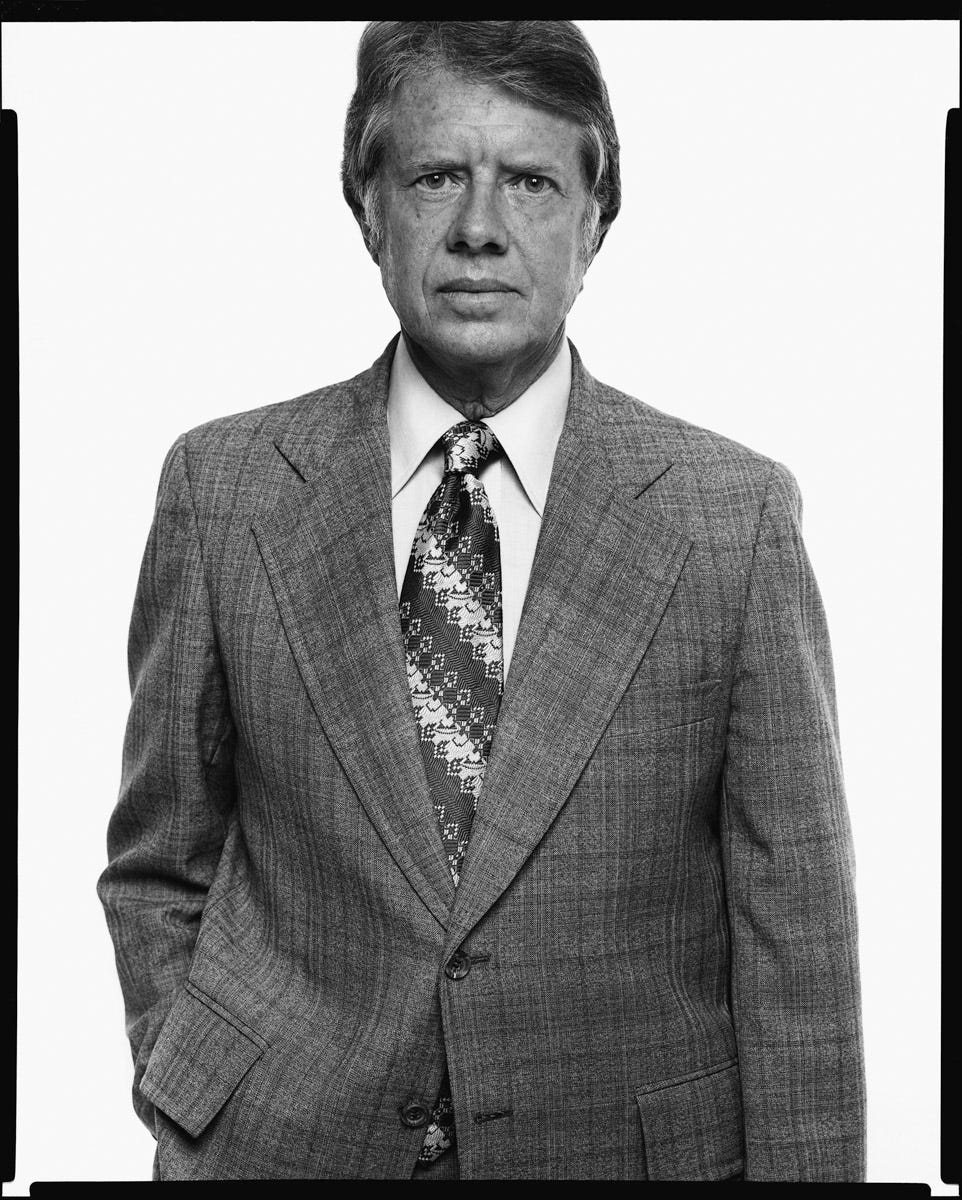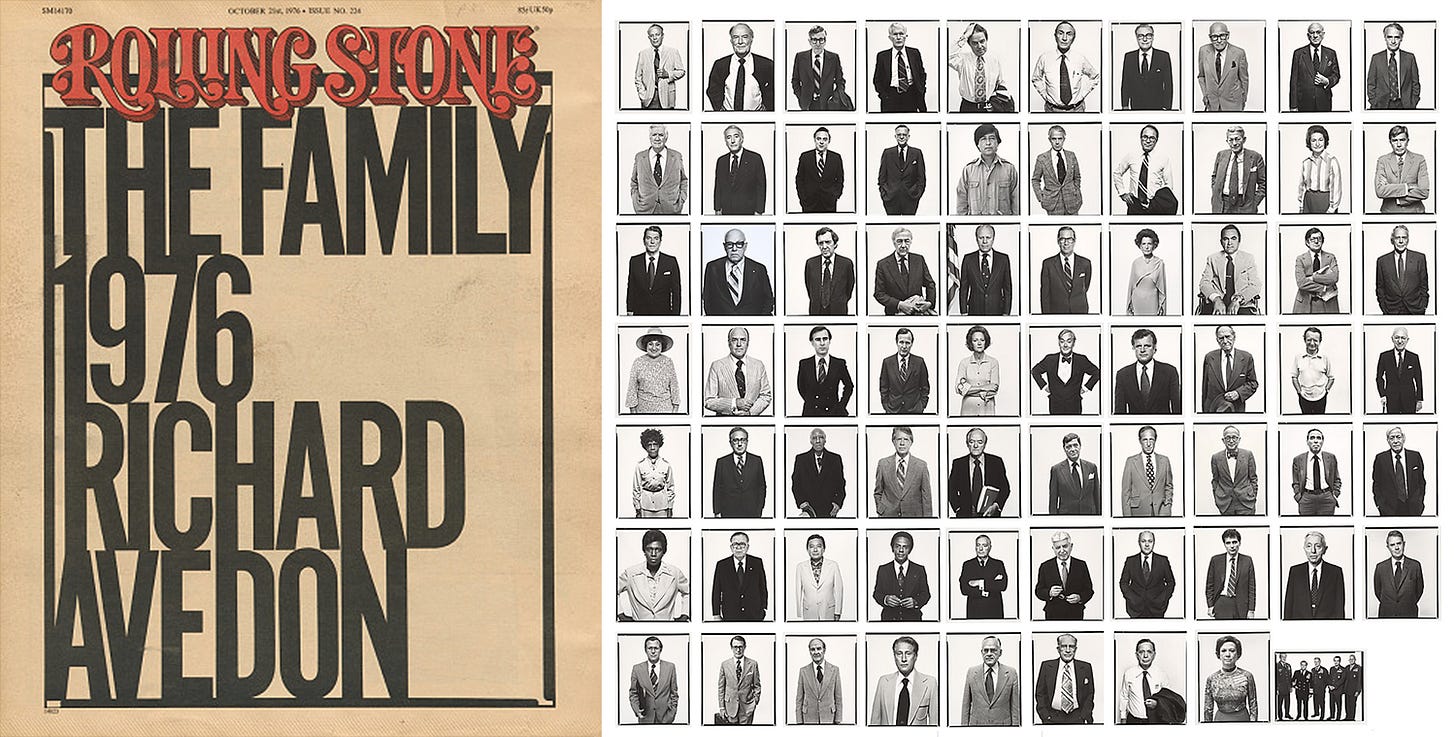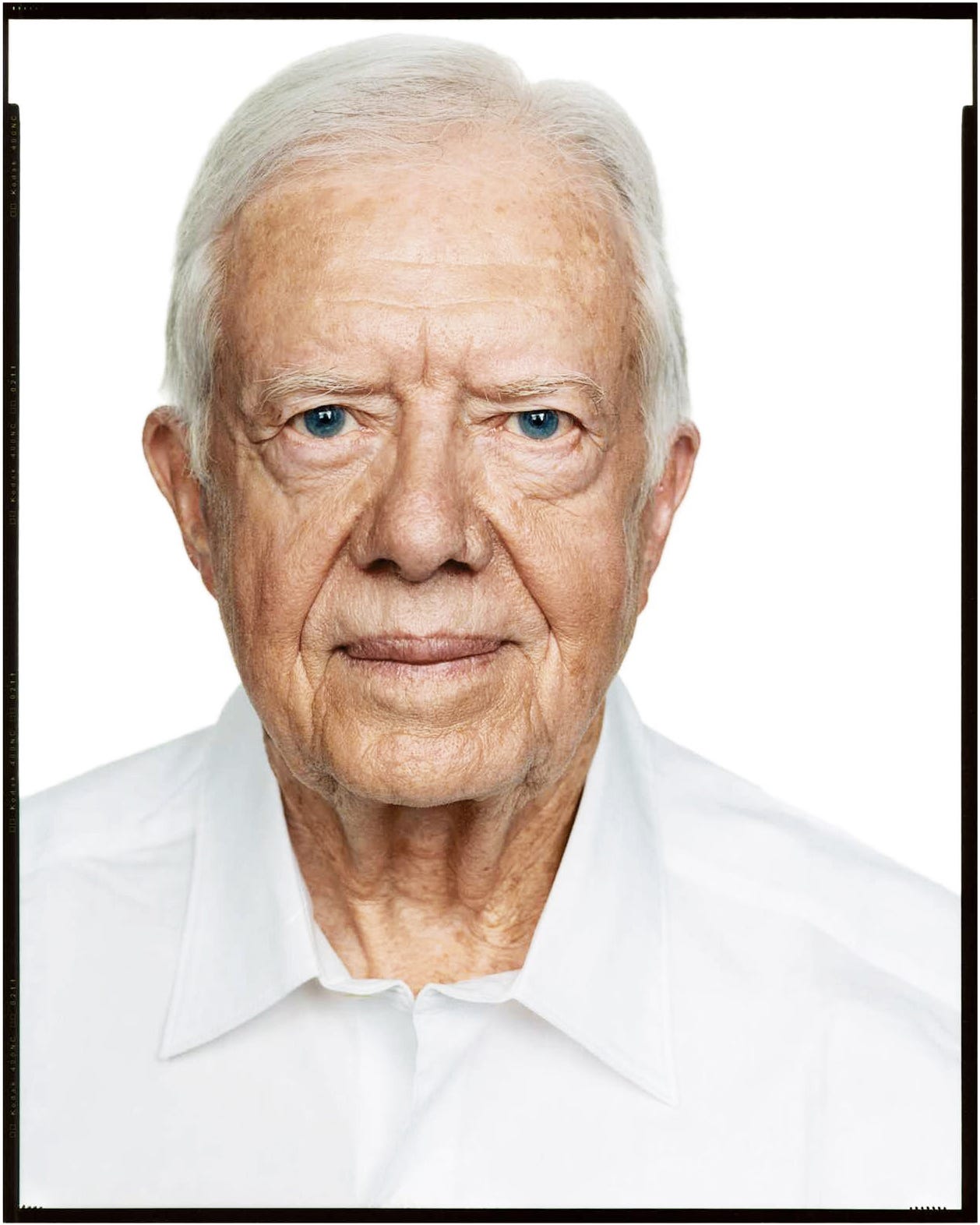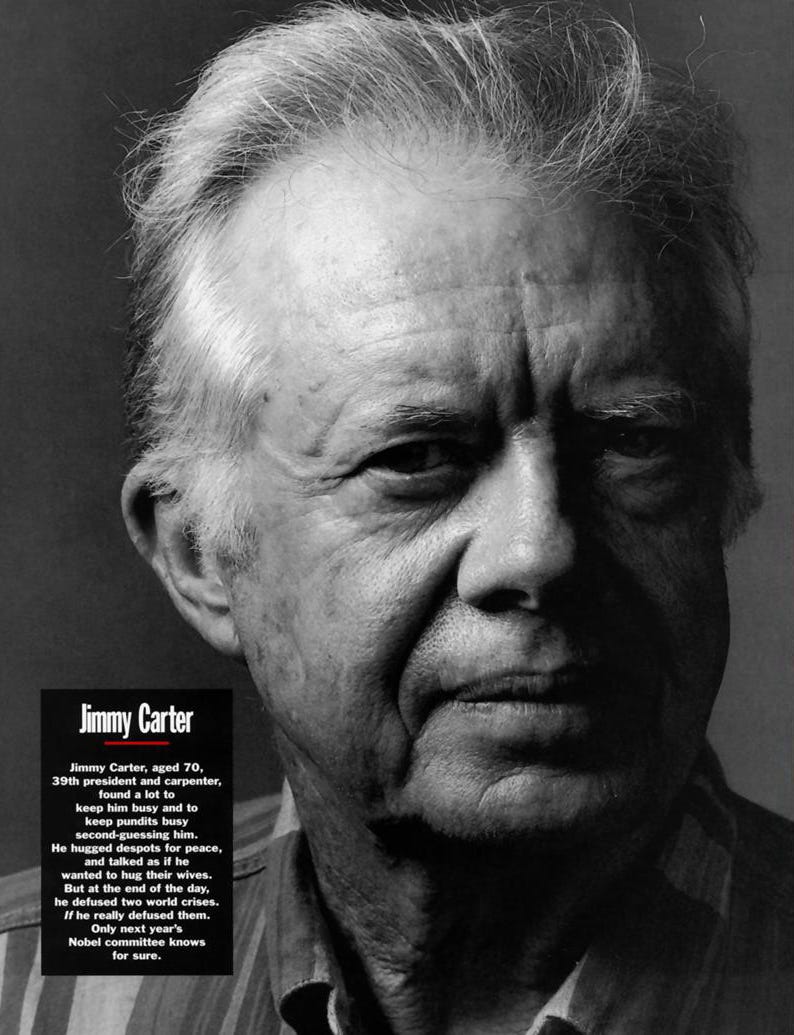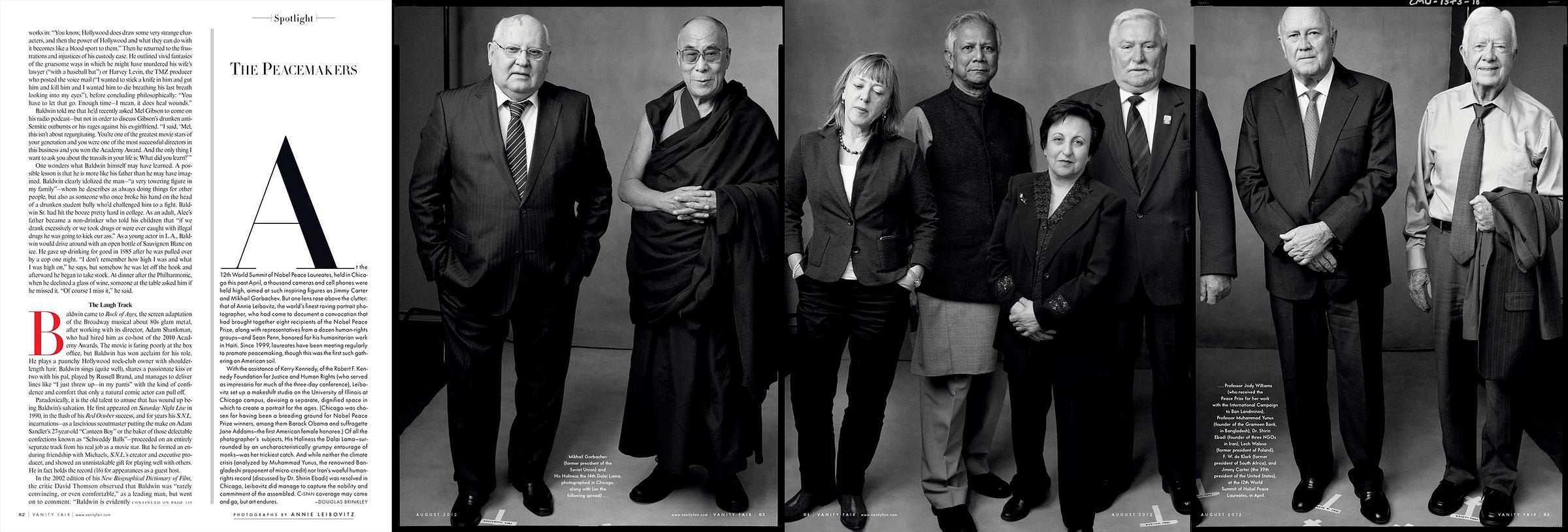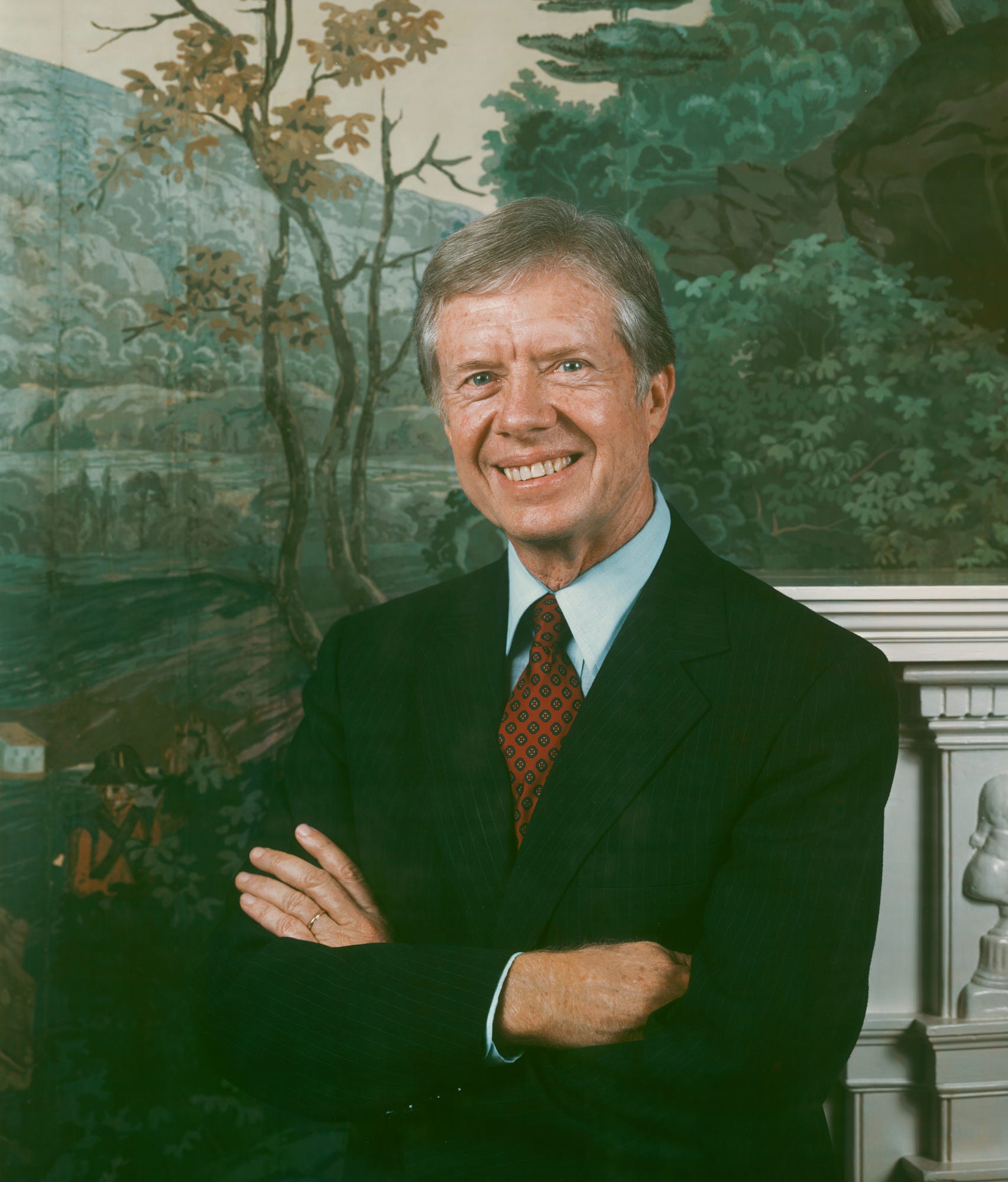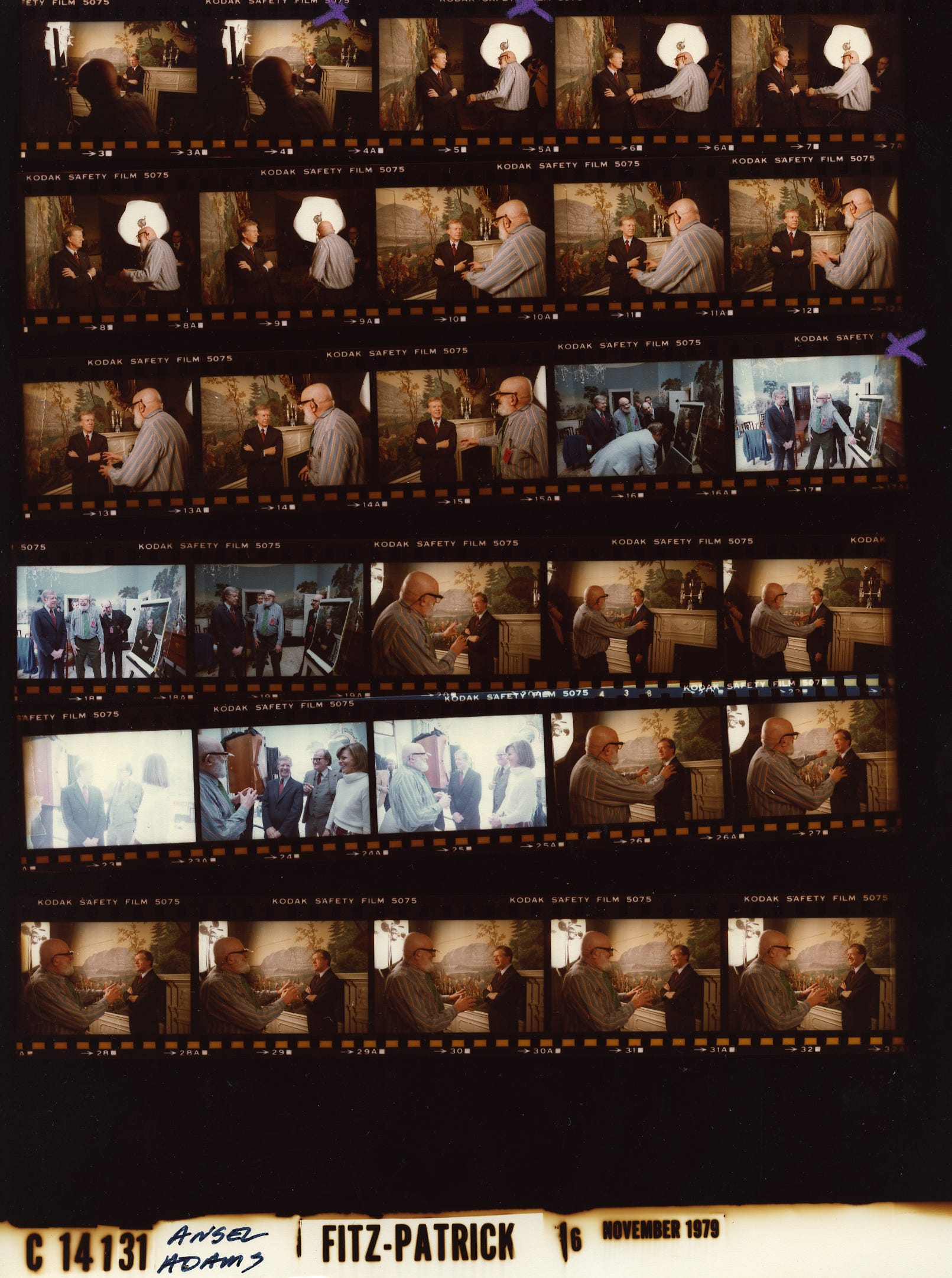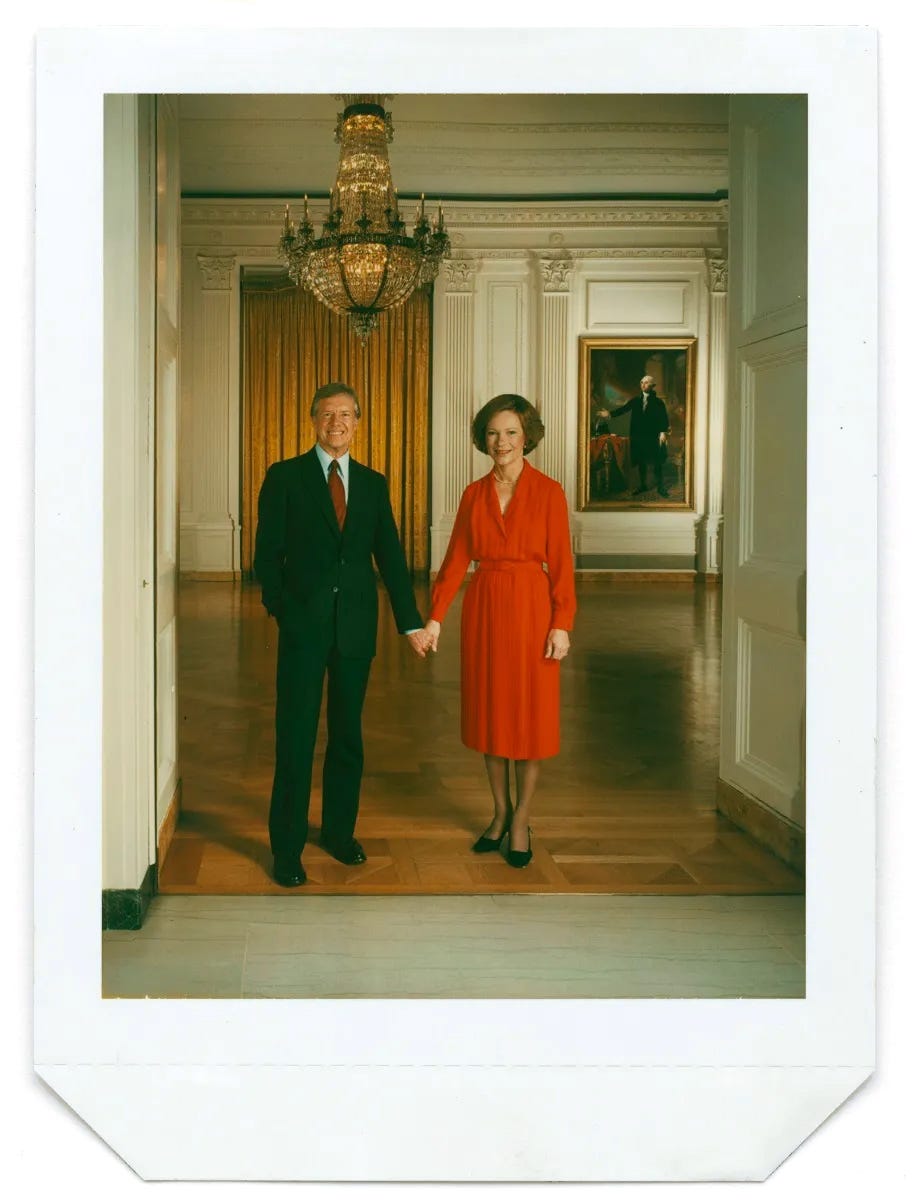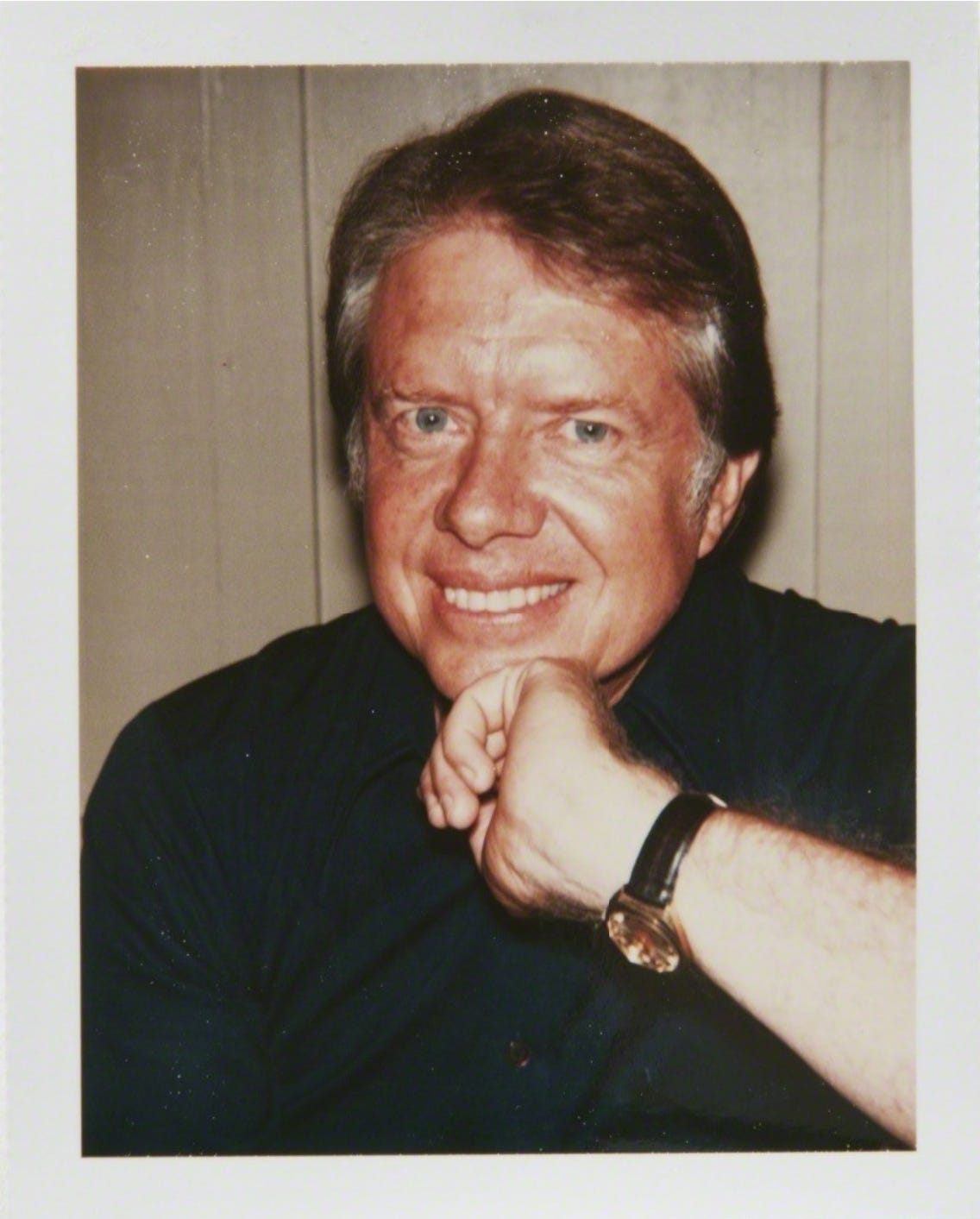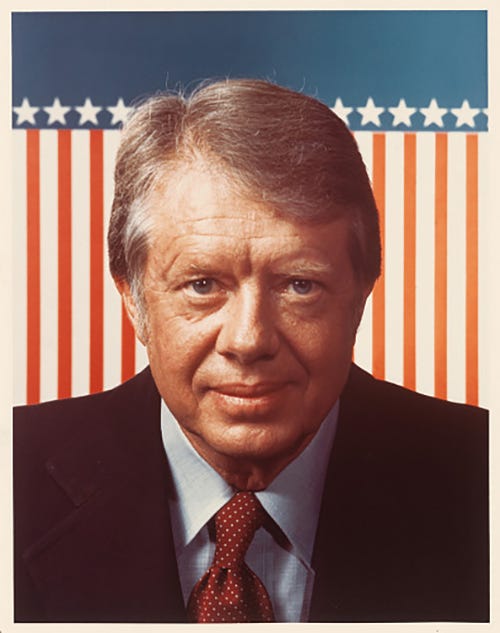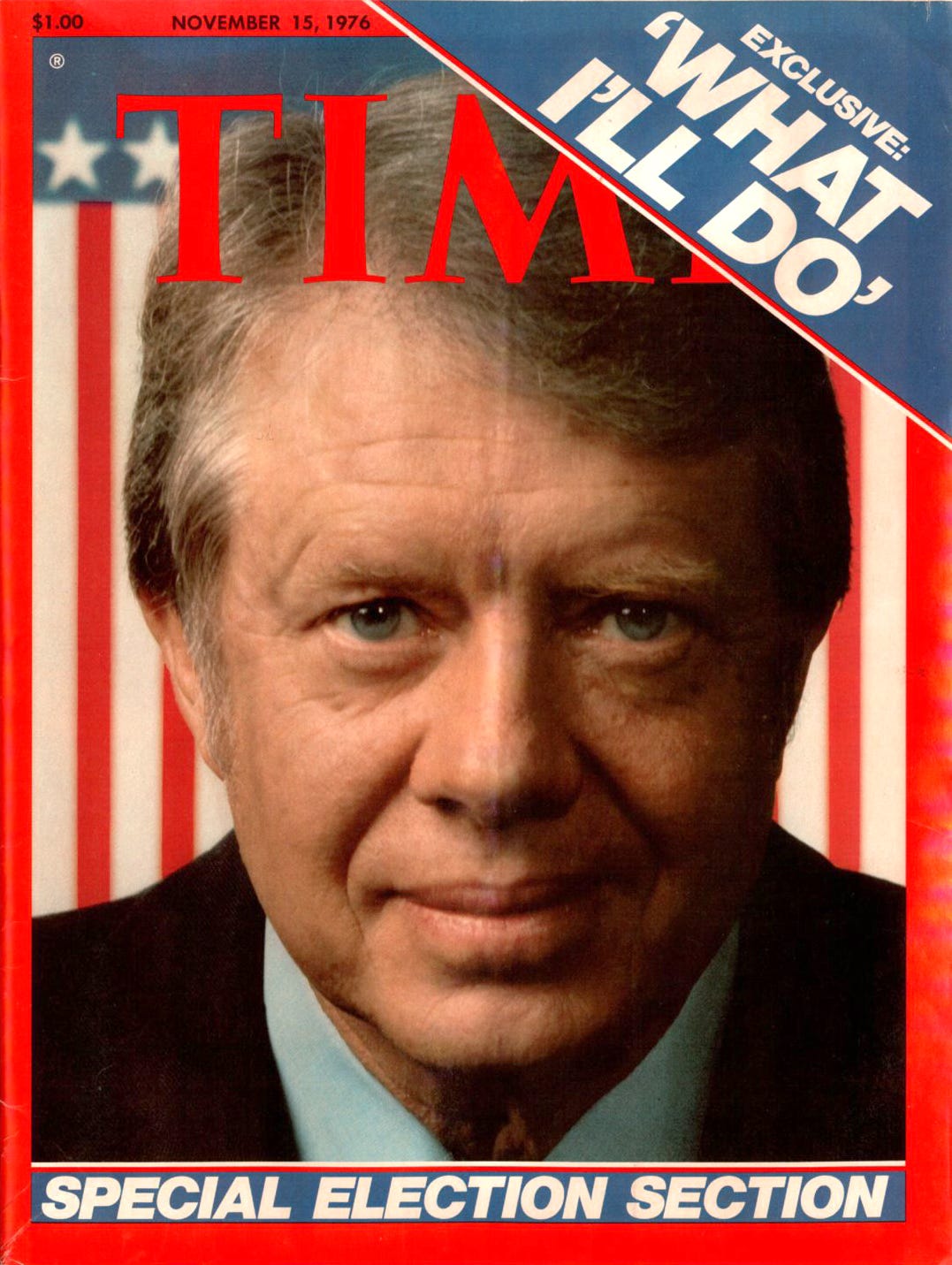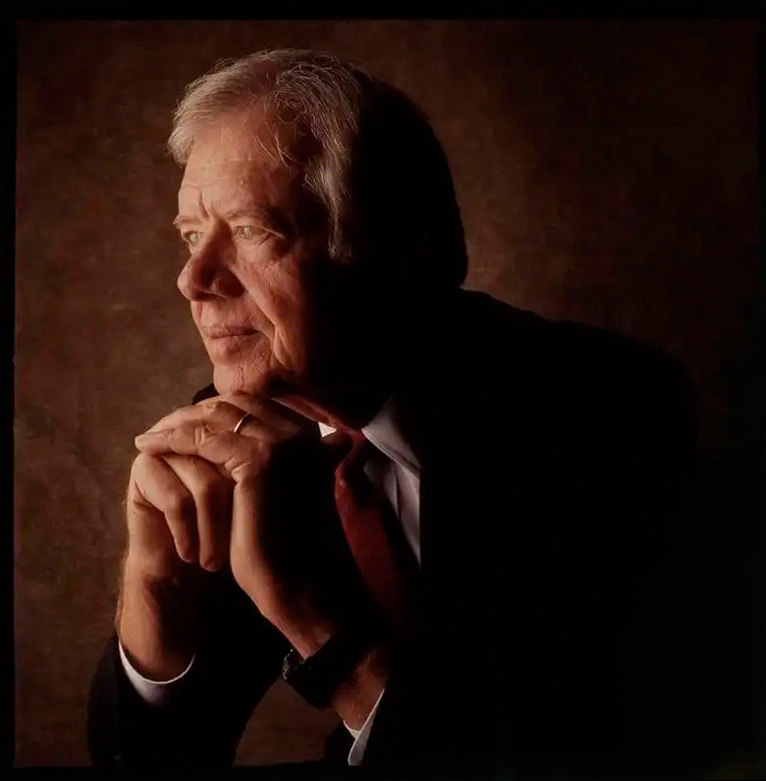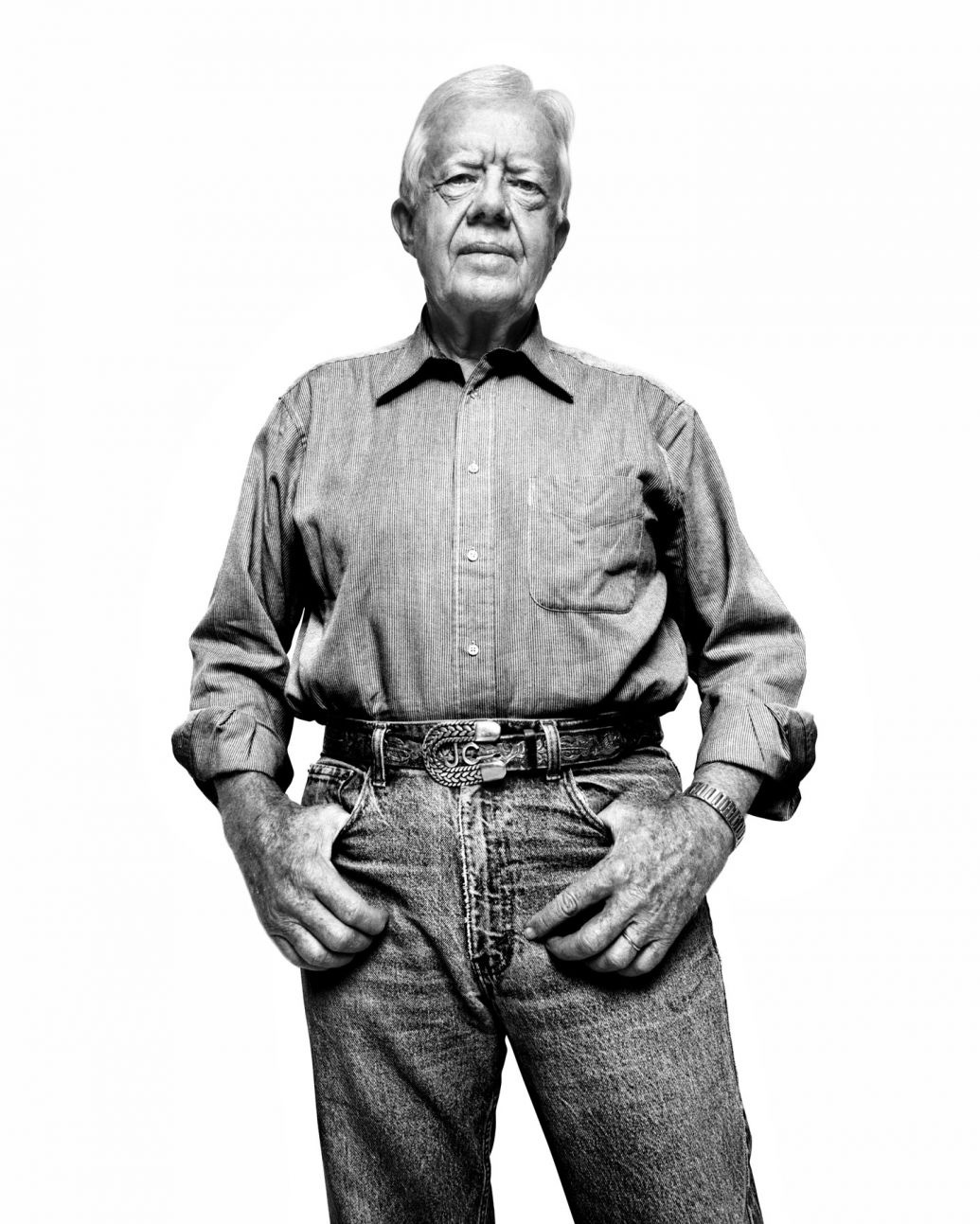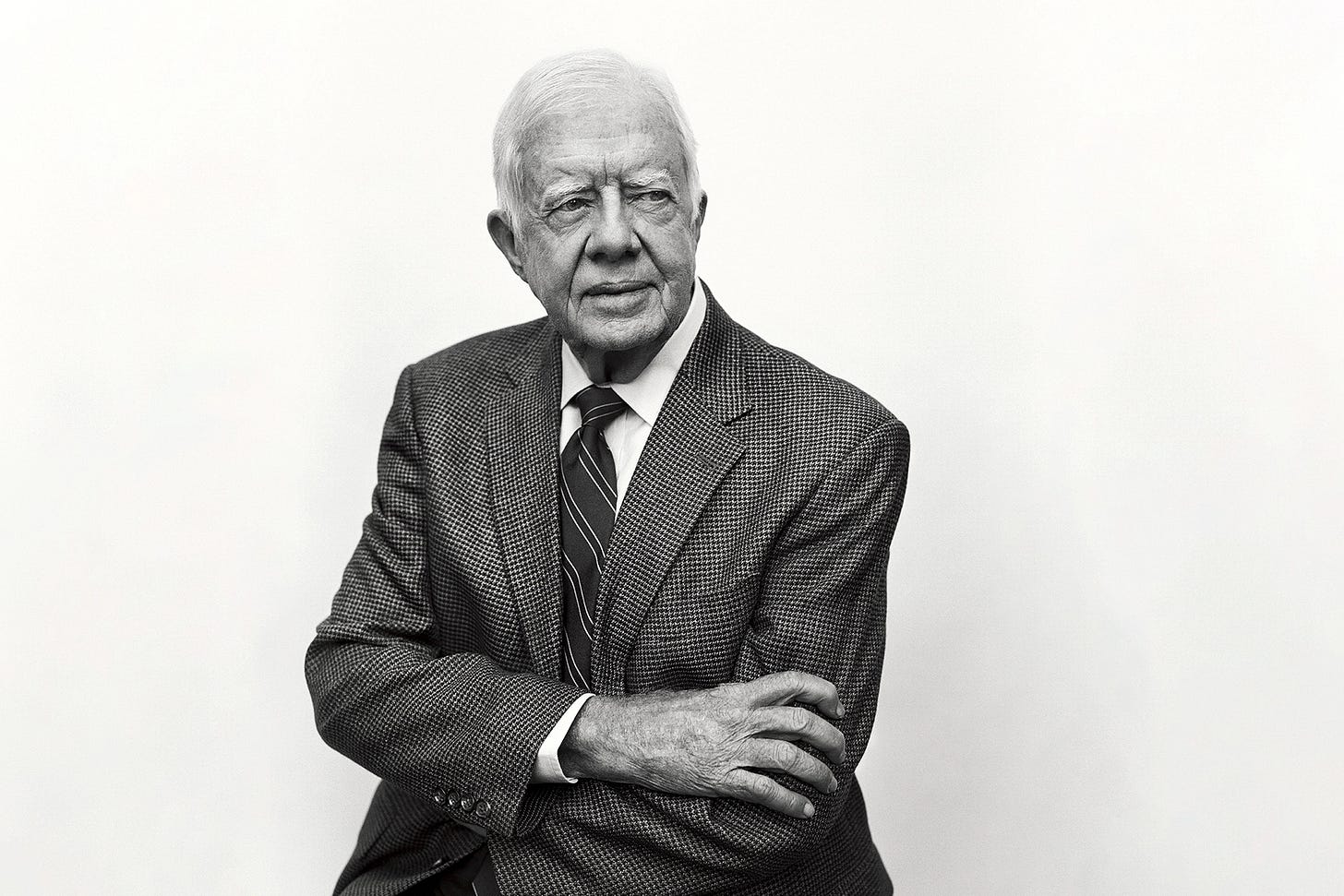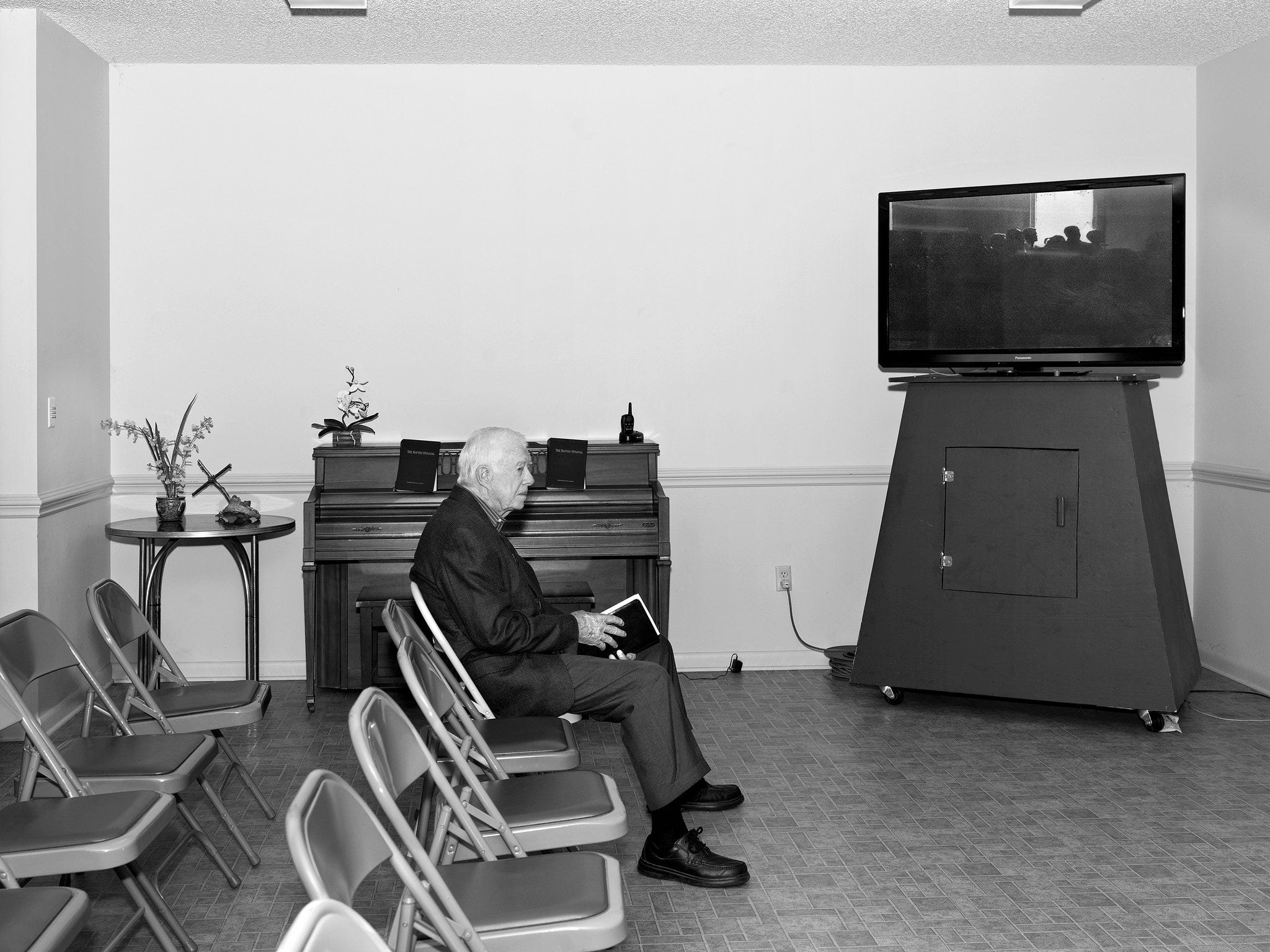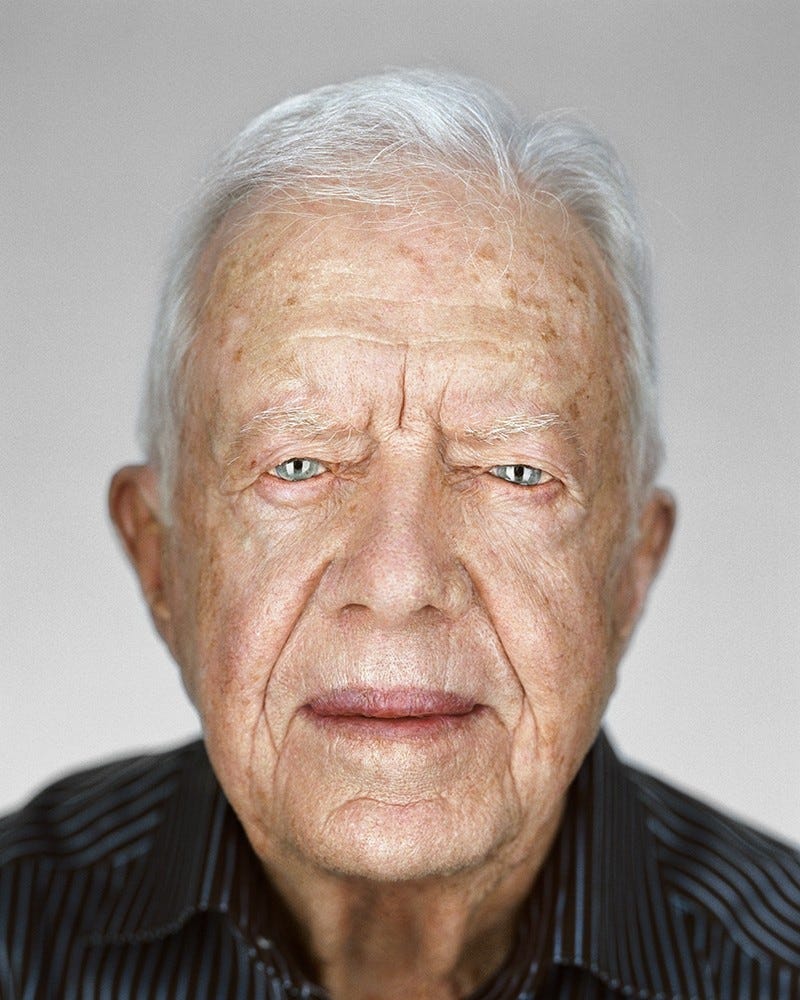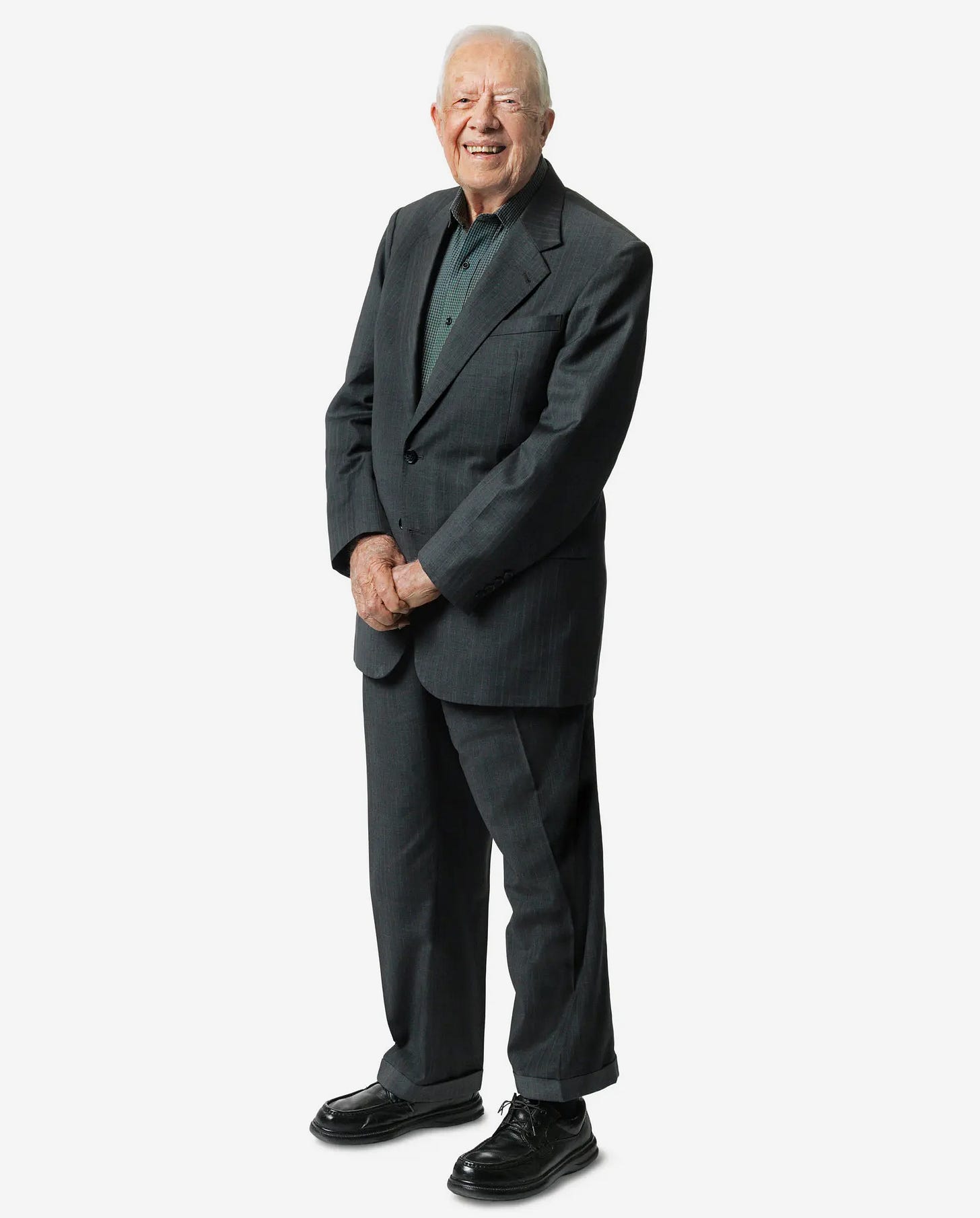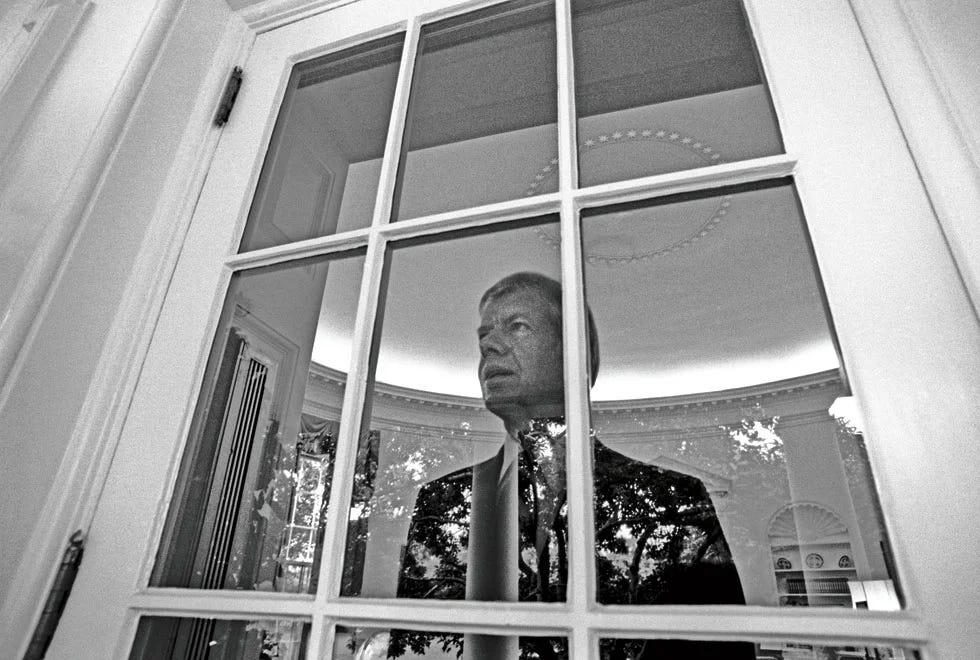The Portraits of President Jimmy Carter
The 39th President sat for the some of the greats - Karsh, Avedon, Leibovitz, and another that may surprise you.
This article was originally published in March 2023, when former President Jimmy Carter entered hospice care. He passed away at home December 29, 2024, surrounded by family
Former President Jimmy Carter recently announced he was receiving hospice care at his home in Plains, Georgia. Carter is the first president I remember as a child growing up in rural Kentucky—his Southern accent felt familiar even then. So when I heard the news, I started researching pictures from his life and was struck by how many legendary photographers shot his portrait.
Yousuf Karsh, one of the most significant portraitists of the 20th century, made this photo of Carter shortly before he left office in 1981. Carter’s body language and the lighting are signature Karsh. The tension is palpable.
TIME published a previously unseen photo from Karsh’s session on the cover of their tribute to Carter after his death on December 29, 2024. The cover, designed and ready for years, featured an image I’d never seen until now. It’s far less strained that the one above, more pensive and meaningful. A perfect cover.
I dug around in the National Archives and found this contact sheet of Karsh photographing Carter’s staff in 1977 for TIME. These were taken by Jack E. Kightlinger, one of Carter’s White House photographers. It’s fascinating to see Karsh’s Calumet 8x10 view camera and tungsten flood lights in action.
Revolutionary fashion and portrait photographer Richard Avedon was one of the few to photograph President Carter before and after office. This first portrait of Carter is from “The Family,” the iconic portfolio Avedon shot for Rolling Stone in 1976.
The second time Avedon photographed Carter was at the 2004 Democratic National Convention in Boston for The New Yorker. Carter’s relaxed, piercing blue eyes are distinct in this portrait, I never really noticed them before.
Avedon died a few months after the shoot. New Yorker editor David Remnick discussed the portrait after Avedon’s death, “The photograph of Carter is of a kind of saintly presence, not because Jimmy Carter was a saint all his life but because in his retirement, he has that aura in a way that certain ex-presidents, living and dead, did not and do not.”
Annie Leibovitz covered Carter’s 1976 campaign for Rolling Stone and later photographed him twice for Vanity Fair—first in 1994, for their “Hall of Fame” portfolio.
In 2012, Leibovitz photographed Carter again for Vanity Fair as part of “The Peacemakers,” a series of images she made in a makeshift studio at the 12th World Summit of Nobel Peace Laureates in Chicago.
I was surprised to learn Ansel Adams, the renowned landscape photographer, also made Carter’s portrait.
According to The Washington Post, President Carter suggested that a photograph, instead of an oil painting, “might be a good way to cut costs and symbolize frugality.” Adams accepted the gig, pro-bono, but asked that his expenses be reimbursed by the White House.
Adams made the portrait of Carter on November 6, 1979, with the gigantic 20x24 Polaroid land camera—which came with a crew of four.
But even more interesting to me are the behind-the-scenes images of the shoot by White House photographer William Fitz-Patrick. You can see Adams’ rapport with the President, as well as Carter’s reaction to the enormous Polaroids (about 90 seconds after they were taken). It looks as though Adams is directing Carter’s body language (frames 11 & 12) and then pointing out the results (frame 17).
Adams also made this portrait of the President and his wife, Rosalynn. It was Adams’ favorite photo from the shoot. “They both look like a million dollars,” Adams said. “They are perfect, the room is perfect, the composition is perfect.”
Another famous Polaroid of Jimmy Carter was taken by Andy Warhol. The Democratic National Committee commissioned Warhol to create a poster in 1976 and Carter, who was a fan of Warhol’s, invited him to his peanut farm in Plains, Georgia for the shoot.
“They were very normal. We got along very well,” Warhol wrote in his 1979 book, Exposures. “Jimmy Carter gave me two big bags of peanuts which he signed. That made the whole trip worthwhile.”
Another legend, Arnold Newman, photographed Carter for TIME in October of 1976. The image is strikingly different than Newman’s other photographs of presidents— simple, straight-forward, but the more I look at it the more I like it. It’d make a great stamp.
TIME published the photo on their cover November 15, 1976, after the election results were announced. It was the seventh time Carter was on the cover in 1976, his first time as President.
In 1991, William Coupon photographed Carter in his signature hands-clasped-under-chin style for TIME.
Coupon famously photographed several presidents for TIME, including George W. Bush when he was named Person of the Year in 2000. Coupon said in an interview, “Bush looked over my past work and singled out pictures of Jimmy Carter and Yasser Arafat, both of whom had posed with their hands clasped under their chins. He said, ‘No way I’m posing like that.’” But he did.
Fast forward to 2001, Platon, who has photographed more world leaders than anyone, captured a very relaxed-looking Jimmy Carter.
My eye instantly goes to the “JC” horseshoe belt buckle. “Carter is a cowboy at heart,” Platon said in a 2012 interview.
One of my favorite portrait photographers, Mark Seliger, made this image of Carter for Rolling Stone in 2011.
A more unconventional portrait of Carter was taken by Magnum photographer Alec Soth in 2014 for The New York Times Magazine.
Soth captured Carter in a solitary moment at the Maranatha Baptist Church in Plains, where Carter used to teach Sunday-school.
Martin Schoeller photographed Carter in 2014 for People magazine in his customary “big head” style, capturing a quiet, almost sad, kindness in Carter’s eyes.
One of my favorite entertainment and portrait photographers, Sally Montana, made this joyful portrait of Carter for The New York Times in 2018. The imperfection of Carter’s pant leg is a nice detail, very grandfatherly.
And lastly, though not a formal portrait, this photo by Harry Benson, for me, encapsulated Carter’s presidency. On November 4, 1979, the morning after Americans were taken hostage in Iran, Benson entered the Oval Office and saw Carter looking out of the window. Carter moved away from the window, so Benson asked him to do it again.
“I’ve been looking out the window all morning,” Carter responded.
Benson pushed, asking the President again, “Do you mind? I would like to go out and take a photograph.” Benson recalled in 2016, “I went out and took a picture. I really didn’t think it worked. I really couldn’t see anything. The light was all wrong. But it worked.”




